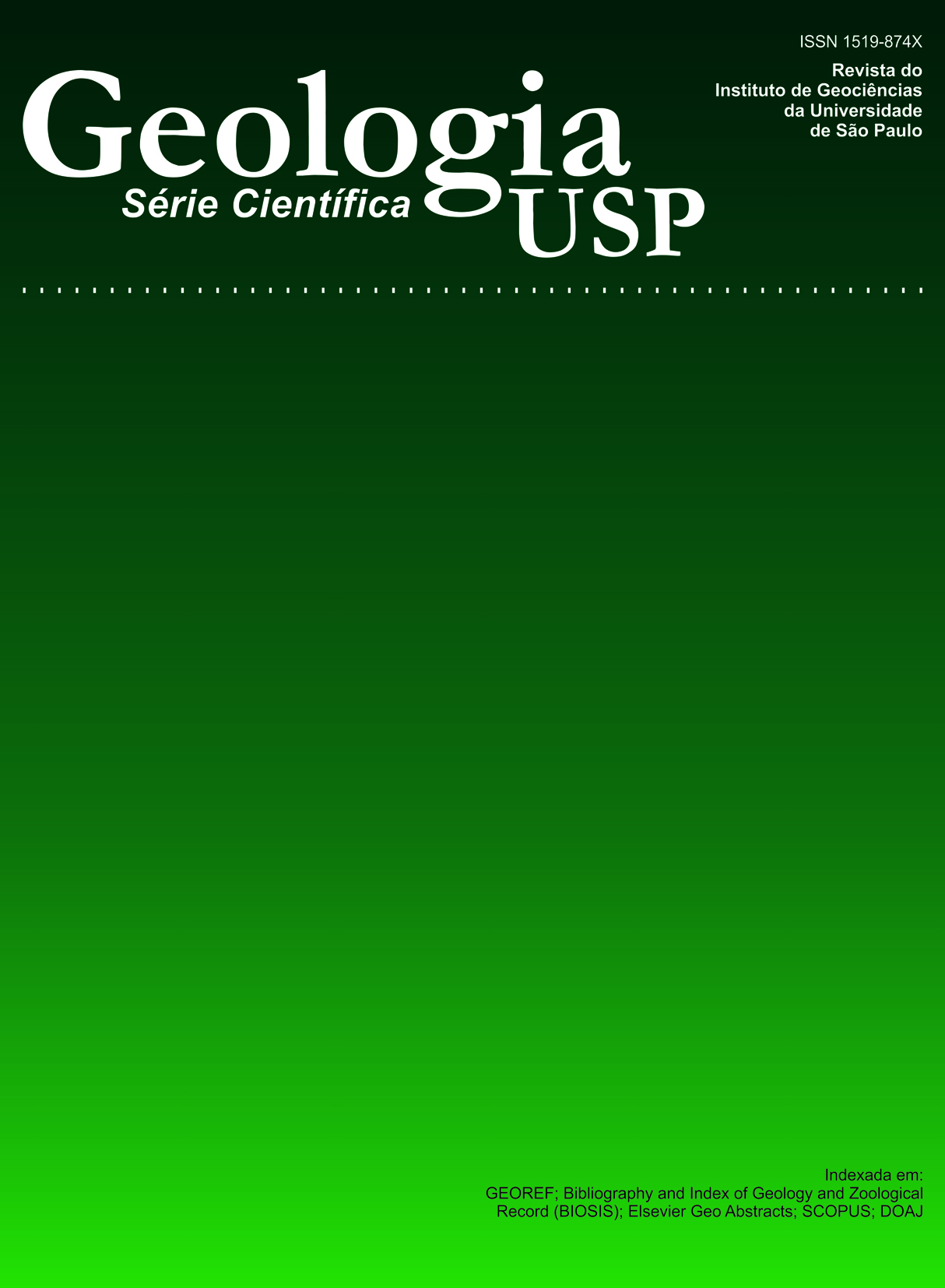The Paraguay fold belt in the Serra da Bodoquena and Miranda River depression, Mato Grosso do Sul
DOI:
https://doi.org/10.5327/Z1519-874X2011000300005Keywords:
Brasiliano, Mobile belt, Corumbá Group, Cuiabá Group, Neoproterozoic, EdiacaranAbstract
The Southern Paraguay Belt is a typical fold-and-thrust belt. Its geological evolution began with a continental rifting process, probably at the end of the Cryogenian, evolving into a restricted sea and an extensive marine transgression at the end of the Ediacaran. The final collisional event occurred during the Lower Cambrian, with post-collisional magmatism during the Upper Cambrian. The Corumbá Group is divided into five formations (Cadiueus, Cerradinho, Bocaina, Tamengo and Guaicurus). The Puga Formation is correlated to the Cerradinho and Cadiueus formations. This stratigraphy can be seen even in the most deformed parts located in central-eastern area. In the far west of the area, the Corumbá Group is deposited above an unconformity in the Rio Apa cratonic block. The name Agachi Schists is suggested for the schists located at the easternmost portion of the area. During the Ediacaran period, whereas, in the east part of the area, the Cuiabá Group was affected by deformation, metamorphism and arc-related granites, in the west part of the area, the Tamengo and Guaicurus formations were deposited, probably in a context of foreland basin. Up to three superimposed coaxial folding events are observed associated with greenschist metamorphism and thrust faults, showing a westward tectonic vergence. WSW - ESE convergence vectors indicate that the collision with the Rio Apa block was slightly oblique. Changes in metamorphism and structural style can be explained by the westward migration of the deformational front. The main thrust faults coincide with important basin boundaries, suggesting that the listric faults of the rift stage were reactived by them.Downloads
Download data is not yet available.
Downloads
Published
2011-12-01
Issue
Section
Articles
License
Authors who publish in this journal shall comply with the following terms:
- Authors keep their copyright and grant to Geologia USP: Série Científica the right of first publication, with the paper under the Creative Commons BY-NC-SA license (summary of the license: https://creativecommons.org/licenses/by-nc-sa/4.0 | full text of the license: https://creativecommons.org/licenses/by-nc-sa/4.0/legalcode) that allows the non-commercial sharing of the paper and granting the proper copyrights of the first publication in this journal.
- Authors are authorized to take additional contracts separately, for non-exclusive distribution of the version of the paper published in this journal (publish in institutional repository or as a book chapter), granting the proper copyrights of first publication in this journal.
- Authors are allowed and encouraged to publish and distribute their paper online (in institutional repositories or their personal page) at any point before or during the editorial process, since this can generate productive changes as well as increase the impact and citation of the published paper (See The effect of Open Access and downloads on citation impact).
How to Cite
Campanha, G. A. da C., Boggiani, P. C., Sallun Filho, W., Sá, F. R. de, Zuquim, M. de P. S., & Piacentini, T. (2011). The Paraguay fold belt in the Serra da Bodoquena and Miranda River depression, Mato Grosso do Sul . Geologia USP. Série Científica, 11(3), 79-96. https://doi.org/10.5327/Z1519-874X2011000300005





